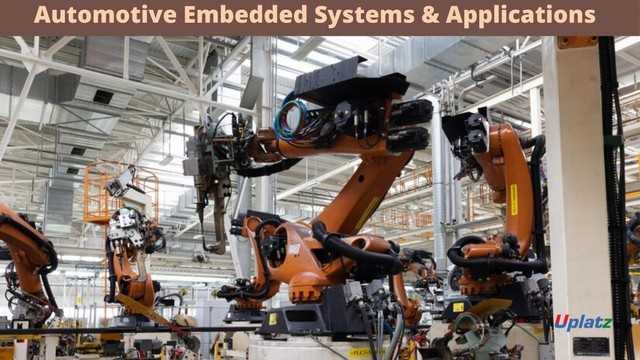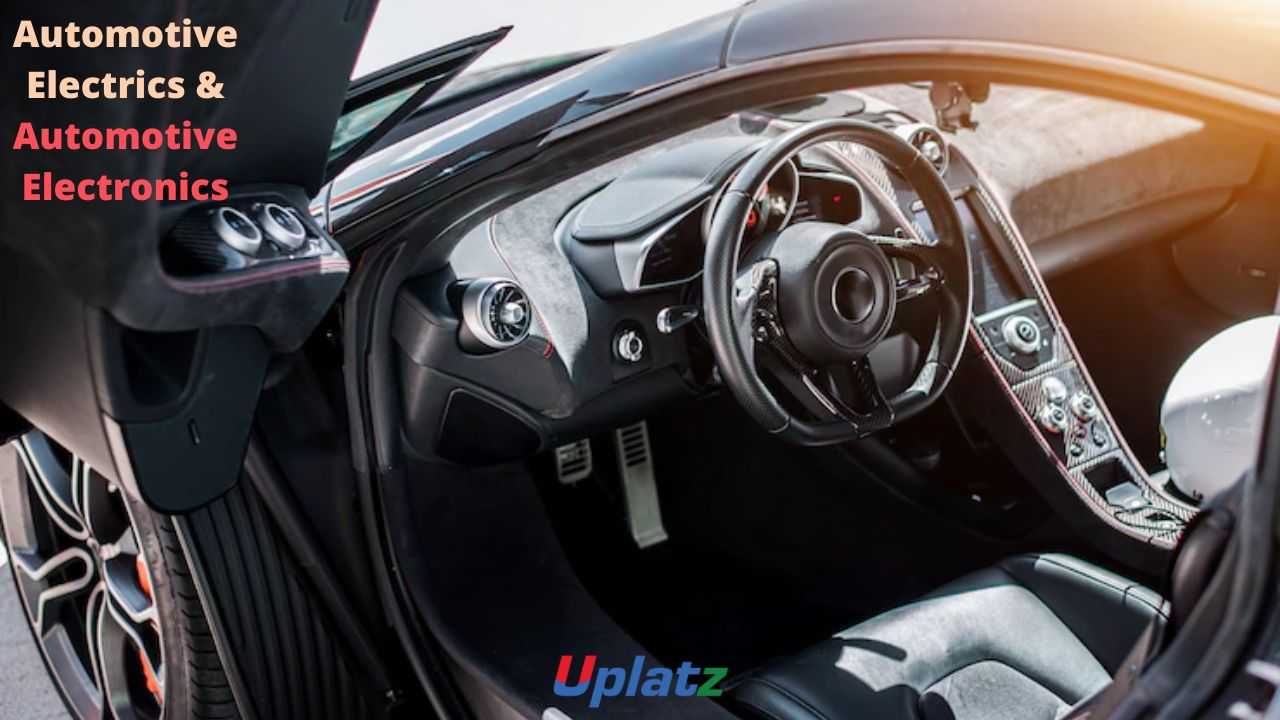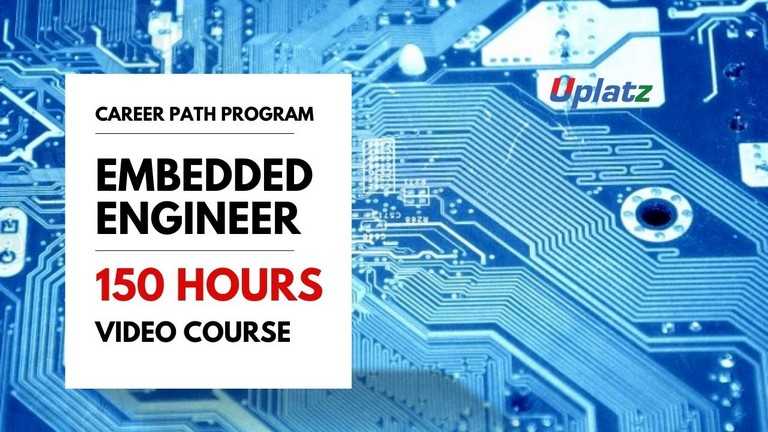Automotive Control Systems
Analyze Automotive Control Systems - Engine Control & Management Systems, Thermodynamic Engine, Diesel Engine Modelling, Diagnosis, Driveline Control.Preview Automotive Control Systems course
Price Match Guarantee Full Lifetime Access Access on any Device Technical Support Secure Checkout Course Completion Certificate 85% Started a new career
BUY THIS COURSE (
85% Started a new career
BUY THIS COURSE (GBP 12 GBP 29 )-
 87% Got a pay increase and promotion
87% Got a pay increase and promotion
Students also bought -
-

- Automotive Embedded Systems & Applications
- 30 Hours
- GBP 12
- 583 Learners
-

- Automotive Electrics and Automotive Electronics
- 20 Hours
- GBP 12
- 97 Learners
-

- Career Path - Embedded Engineer
- 150 Hours
- GBP 32
- 2344 Learners

Compensation of drivetrain oscillations and the adaptive control of automatic gear boxes are examples for applications in the drivetrain area. ABS control, suspension control and vehicle dynamic control increase the drive ability of the vehicle and support the driver in dangerous situations. Airbag-systems with automatic recognition of seat occupancy improve passive safety of the passengers in case of an accident. Another large area of control applications are comfort functions like air-condition or navigation systems.
Uplatz provides this comprehensive course on Automotive Control Systems.
Course/Topic - Automotive Control Systems - all lectures
-
Lecture 1 - Thermodynamic Engine Cycle - part 1
-
Lecture 2 - Thermodynamic Engine Cycle - part 2
-
Lecture 3 - Engine Management System
-
Lecture 4 - Diesel Engine Modelling
-
Lecture 5 - Engine Control Systems - part 1
-
Lecture 6 - Engine Control Systems - part 2
-
Lecture 7 - Diagnosis - part 1
-
Lecture 8 - Diagnosis - part 2
-
Lecture 9 - Driveline Control - part 1
-
Lecture 10 - Driveline Control - part 2
-
Lecture 11 - Driveline Control - part 3
-
Lecture 12 - Driveline Control - part 4
-
Lecture 13 - Driveline Control - part 5
The "Automotive Control Systems" course is designed to provide participants with a thorough understanding of the principles, technologies, and applications involved in automotive control systems. This course aims to equip learners with the knowledge and skills needed to design, implement, and optimize control systems in modern vehicles, enhancing their performance, safety, and efficiency. Key Objectives of this course are to understand Automotive Control Systems Fundamentals, Explore Automotive Sensors and Actuators and Understand Vehicle Dynamics and Control. At last this course is ideal for automotive engineers, control systems engineers, and IT professionals seeking to deepen their knowledge and skills in automotive control systems and contribute to the advancement of Modern vehicle technologies.
Overview of control systems in automobiles
a).Importance of control systems in vehicle operation
b).Types of automotive control systems (mechanical, hydraulic, electronic)
c).Sensors used in automotive applications (temperature, pressure, position, speed sensors)
d).Actuators (solenoids, motors, valves) and their functions
e).Integration of sensors and actuators in control systems
f).Introduction to Electronic Control Units (ECUs)
g).Types of ECUs (Engine Control Unit, Transmission Control Unit, Body Control Module)
h).ECU architecture and communication protocols (CAN, LIN, FlexRay)
i).Engine management systems (EMS) overview
j).Fuel injection systems (direct injection, port fuel injection)
k).Ignition systems and timing control
l).Emissions control systems (catalytic converters, exhaust gas recirculation
m).Automatic and manual transmission systems
n).Transmission control modules (TCMs) and shift strategies
o).Continuously Variable Transmission (CVT) systems
p).Anti-lock Braking System (ABS) and Electronic Stability Control (ESC)
q).Traction control systems (TCS) and brake assist systems
r).Suspension control systems (Active Suspension, Adaptive Damping)
s).Power windows, door locks, and mirrors control
t).Climate control systems (HVAC)
u).Lighting control systems (headlights, taillights, interior lighting)
v).Controller Area Network (CAN) bus architecture
w).LIN (Local Interconnect Network) bus and FlexRay protocols
x).Diagnostics and OBD (On-Board Diagnostics) system
y).Introduction to ADAS technologies (Lane Departure Warning, Adaptive Cruise Control)
z).Sensor fusion and perception systems (cameras, radar, lidar)
aa).Autonomous driving and future trends in automotive control systems
ab).Real-world examples of automotive control system implementations
ac).Hands-on projects and simulations
ad).Troubleshooting and maintenance of automotive control systems
ae).This syllabus provides a comprehensive overview of the key topics typically included in a course on Automotive Control Systems, focusing on both theoretical concepts and practical applications relevant to the automotive industry.
1).Thermodynamic Engine Cycle-I
2).Thermodynamic Engine Cycle-II
3).Engine Management System
4).Diesel Engine Modelling
5).Engine Control Systems-I
6).Engine Control Systems-II
7).Diagnosis -I
8).Diagnosis-II
9).Driveline Control-I
10).Driveline Control-II
11).Driveline Control-III
12).Driveline Control-IV
13).Driveline Control V
Certifications in Automotive Control Systems can significantly enhance your career by validating your expertise in this specialized field. Here are some of the top certifications related to automotive control systems, along with the benefits of each:
1. ISO 26262 Functional Safety Certification
Overview: ISO 26262 is an international standard for functional safety in automotive systems. This certification focuses on ensuring that safety-critical systems meet rigorous safety requirements.
Benefits:
a).Industry Recognition: Demonstrates your ability to develop and manage safety-critical automotive systems in compliance with industry standards.
b).Enhanced Job Prospects: Opens opportunities for roles involving safety analysis and functional safety management in automotive companies.
c).Compliance Expertise: Validates your understanding of safety processes and practices essential for meeting regulatory and safety requirements.
2. Automotive Service Excellence (ASE) Certification
Overview: ASE certification is a widely recognized certification for automotive technicians. It covers various aspects of automotive repair and diagnostics, including electrical and electronic systems.
Benefits:
a).Broad Industry Acceptance: Highly respected certification that enhances credibility and job prospects in the automotive repair and maintenance field.
b).Specialized Knowledge: Validates your expertise in diagnosing and repairing complex automotive systems, including control systems.
c).Career Advancement: Provides opportunities for advanced roles and higher salary potential in automotive service and repair.
3. Certified Automotive Engineer (CAE)
Overview: Offered by the Society of Automotive Engineers (SAE), the CAE certification is aimed at professionals in the automotive engineering field. It covers a wide range of topics, including automotive control systems.
Benefits:
a).Comprehensive Knowledge: Validates your broad understanding of automotive engineering principles, including control systems and vehicle dynamics.
b).Professional Credibility: Enhances your reputation as a qualified engineer in the automotive industry.
c).Career Opportunities: Opens doors to advanced engineering roles and projects involving complex automotive control systems.
4. Automotive Electronics Certification
Overview: This certification focuses on the design, implementation, and troubleshooting of automotive electronics, including control systems and electronic control units (ECUs).
Benefits:-
a).Specialized Expertise: Demonstrates your proficiency in automotive electronics, a crucial aspect of modern vehicles.
b).Career Flexibility: Allows you to pursue roles specifically focused on electronic systems within automotive companies.
c).Industry Demand: Addresses the growing need for experts in automotive electronics as vehicles become more technologically advanced.
5. Advanced Driver Assistance Systems (ADAS) Certification
Overview: This certification focuses on advanced driver assistance systems, which often involve sophisticated control systems for vehicle safety and automation.
Benefits:
a).Cutting-Edge Technology: Validates your knowledge in one of the most rapidly evolving areas of automotive technology.
b).Specialized Roles: Positions you for roles involving the design, implementation, and testing of ADAS technologies.
c).Innovation Impact: Demonstrates your ability to contribute to the development of next-generation automotive systems.
6. Automotive Cybersecurity Certification
Overview: Focuses on securing automotive systems against cyber threats, including control systems that are increasingly connected and vulnerable to attacks.
Benefits:
a).Cybersecurity Expertise: Validates your skills in protecting automotive control systems from cyber threats.
b).Growing Field: Addresses the rising importance of cybersecurity in automotive systems, providing a niche expertise that is in high demand.
c).Career Growth: Opens opportunities in roles focused on automotive cybersecurity, a critical and emerging area in the industry.
7. Automotive Control Systems Engineer Certification
Overview: Specialized certification for professionals working with automotive control systems, often provided by specialized training organizations or industry-recognized institutions.
Benefits:
a).Focused Expertise: Confirms your specialized knowledge in automotive control systems, including design, integration, and management.
b).Professional Development: Enhances your qualifications for roles specifically dealing with automotive control systems.
c).Competitive Edge: Provides a unique credential that differentiates you in the competitive automotive engineering field.
Each of these certifications provides distinct benefits and can significantly enhance your career prospects and professional development in the automotive control systems field.
After completing a course in Automotive Control Systems, individuals can pursue various rewarding careers in the automotive industry, with salaries varying based on factors such as location, level of experience, specific job role, and the employer's industry. Here are some typical job roles and potential salary ranges:
1).Automotive Engineer: As an automotive engineer specializing in control systems, salaries can range from approximately $65,000 to $120,000 per year, depending on experience and location.
2).Embedded Systems Engineer: Salaries for embedded systems engineers can range from about $70,000 to $130,000 annually.
3).Control Systems Engineer: Control systems engineers focusing on automotive applications typically earn salaries ranging from $70,000 to $120,000 per year.
4).Systems Integration Engineer: Salaries for systems integration engineers in the automotive industry range from approximately $70,000 to $130,000 annually.
5).Research and Development (R&D) Engineer: R&D engineers specializing in automotive control systems can earn salaries ranging from about $70,000 to $140,000 per year.
6).Quality Assurance Engineer: Quality assurance engineers focusing on automotive control systems typically earn salaries ranging from $60,000 to $110,000 annually.
7).Technical Consultant: Salaries for technical consultants in the automotive industry vary widely based on experience and specific consulting roles. Generally, salaries can range from $70,000 to $150,000 per year.
8).Project Manager: Automotive project managers overseeing control systems projects can earn salaries ranging from approximately $80,000 to $150,000 annually.
9).Automotive Software Developer: Software developers specializing in automotive control systems typically earn salaries ranging from $70,000 to $130,000 per year.
10).Field Application Engineer: Salaries for field application engineers in automotive control systems range from about $65,000 to $120,000 annually.
It's important to note that these salary ranges are approximate and can vary based on factors such as geographic location (with higher salaries typically found in major metropolitan areas), industry sector (such as automotive manufacturing versus technology firms), and individual qualifications. Additionally, salaries may increase with additional certifications, advanced degrees, and years of relevant experience in automotive control systems.
Q1.What do you think is the role of an automobile engineer in our company?
Ans-When interviewing for the position of an automobile engineer, go through the job description minutely. Even for the same position, responsibilities might be different in different companies. When you know what the company expects from you, framing the answer becomes easy.
Q2. What is a control system?
Ans-The control system the output and inputs are interrelated in such a manner that the output quantity or variable is controlled by input quantity, then such a system is called control system.
Q3. What are the different types of control systems?
Ans-
a).Open Loop control system: The open loop control system is one where the amount of output does not affect the amount of input. There is no feedback from output to input.
b).Closed Loop control system: The closed loop control system provides feedback from the correction output amount. so as to maintain the desired output of the system
Q4.What is the feedback in the control system?
Ans-When the input is fed to the system and the output received is sampled, and the proportional signal is then fed back to the input for automatic correction of the error for further processing to get the desired output is called as feedback in control system.
Q5.What is Signal Flow Graph?
Ans-The graphical representation of the system's relationship between the variables of a set of linear equations is called SFG (Signal Flow Graph). Signal flow graphs do not require any reduction technique or process.
Q6. What is mean by Deterministic control system?
Ans-A control system is said to be deterministic when its response to input as well as behavior to external disturbance is predictable and repeatable.
Q7. Write short notes about SISO and MIMO.
Ans-A system having only one input and one output is called single input and single output system. Some systems may have multiple input and multiple outputs, these are called multiple input and multiple output systems.
Q8. Define Open loop system.
Ans-A system in which output is dependent on input but controlling action is totally independent of the output or changes in input of the system, is called an open loop system.
Q9. What is meant by instrument location & JB location?
Ans-This consist of Instrument location considering the piping drawing given from Piping dept. We identifies the locations of the instrument in the equipment layouts and put the bubbles and elevation and JB nos for the location.
Same way depending upon the accessibility we decide the location of JB and marking of it into the instrument location plan is JB location. There is no need to make a different drawing for this.
Q10. Where is Servomechanism used?
Ans-Servomechanism is used in the control system so that the mechanical position of a device can be varied with the help of output.
The Servomechanism is widely used in a Governor value position control mechanism that is used in power plants to take the speed of turbine and process it using the transducer, and the final value is taken as a mechanical movement of the value. However, nowadays Governor value position control is done with Electronic controls that use power Thyristors. This mechanism is also used in robotic hand movement.
Q11.How to decide cable tray size?
Ans-Based on the occupancy in the cable tray and a number of cables required we have to choose the size of the cable tray. These are available in all sizes like 80,150, 300, 450, 600 and 900.
Q12. What is the cut-off Rate?
Ans-The slope near the cut-off frequency of the log-magnitude curve is called the cut-off rate. The cut-off rate indicates the ability of the system to distinguish between the signal and the noise.
Q13.What is the difference between a two-stroke and a four-stroke engine?
Ans-This is a technical question to test your knowledge and brevity. You may have learnt an entire chapter on this topic back in college, but this time when you have to carefully select the most crucial differentiating factors. Also, mention the practical outcomes of the differences between these two engines.
Q14. What are unstable systems?
Ans-Unstable systems are the system in which all the roots of the characteristic equations lie on the left half of the 'S' plane.
Q15. What is an Automatic Controller?
Ans-Automatic Controllers are the device which compares the actual value of plant output with the desired value. These systems produce the control system that reduces the deviation to ?0? or to a small value and determines the deviation.









